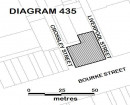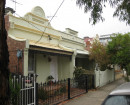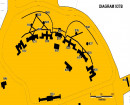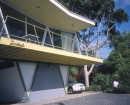ASSEMBLY HALL
156-160 COLLINS STREET MELBOURNE, MELBOURNE CITY
-
Add to tour
You must log in to do that.
-
Share
-
Shortlist place
You must log in to do that.
- Download report
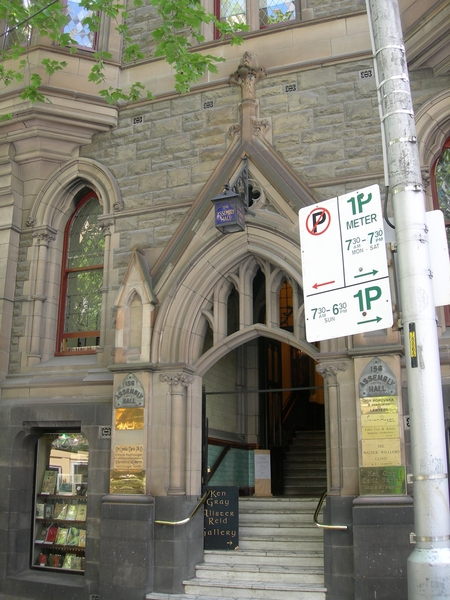

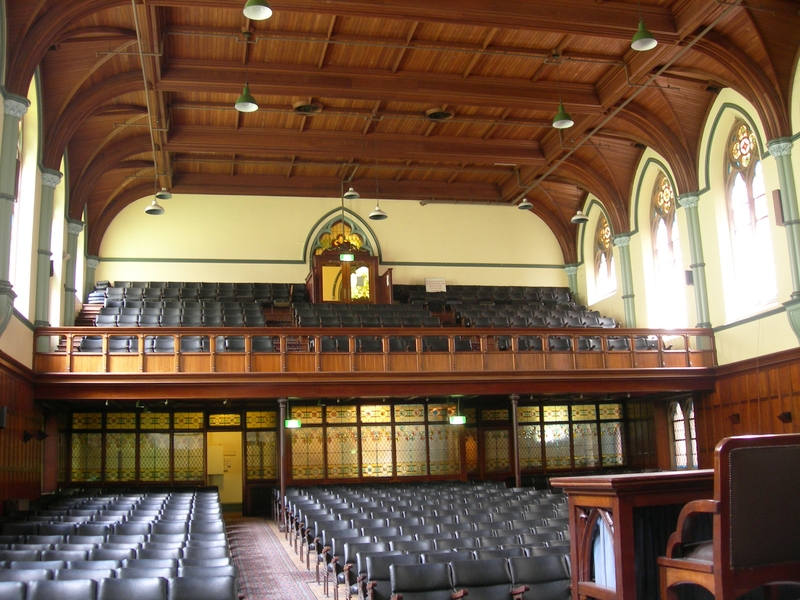





Statement of Significance
What is significant?
The Assembly Hall at 156-160 Collins Street Melbourne was designed by Henry H. Kemp for the Presbyterian Church, and built by Swanson Bros. in 1914-15 on the site of the old Scots Church manse. The four storey structure (the fourth storey was added c.1935) accommodates a hall with gallery, seating 900, offices and a bookshop. The street facade, return, and tower are faced in rock- faced sandstone with dressed stone mouldings.
How is it significant?
The Assembly Hall is of architectural and historical significance to the State of Victoria.
Why is it significant?
The Assembly Hall is of architectural significance as a late example of Gothic Revival architecture. The careful attention paid by the architect to style, materials and massing has resulted in a building which harmonises with the neighbouring church and which is an integral part of the Collins Street streetscape. The Gothic theme continues inside the building, most interestingly in the foyer, stair and hall.
The Assembly Hall is of architectural significance as an example of HH Kemp's work. Kemp was noted for his arts-and-crafts-inspired Queen Anne or Federation style houses, so the Gothic style employed in the Assembly Hall is less common for him (although he was well trained in the style, as evidenced by this building and his 1887 Stage 2 of the Working Men's College). But it shows his determination to ensure the sympathetic integration of his building with the Scots Church nextdoor.
The Assembly Hall is of historical significance for its associations with the Presbyterian Church, its substantial character and prestigious address reflecting the fact that the Victorian branch was the largest, wealthiest and most influential branch of the Presbyterian Church in Australia.
-
-
ASSEMBLY HALL - History
Contextual History:History of Place:
The Assembly Hall was built on a site previosuly occupied by the old Scots Church manse. The Presbyterian church intended to begin construction in the early 1890s, but was thwarted by the onset of economic depression. The Hall was eventually built for a price of 33,159 pounds and opened in 1915. It was initially three storeys high and included Church offices and committee rooms and also writing rooms and caretaker's quarters. It is thought that the first meeting of the Liberal Party took place in the Hall.
The Assembly Hall was also used for the Women’s Parliaments, not long after the hall opened and again in the 1940s. Sessions of the Women’s Parliament were conducted on parliamentary lines with a ministry and political parties, and provided useful training in public speaking and parliamentary procedure. Early suffragists like Vida Goldstein and later enthusiasts such as members of the League of Women Voters, including the founding President Julia Rapke JP (1886–1959), were involved. Between 1947 and 1950 five sessions were held to encourage women to stand for parliament. The hall was also used in the equal pay campaign and for a wide range of other meetings of interest to women.ASSEMBLY HALL - Permit Exemptions
General Exemptions:General exemptions apply to all places and objects included in the Victorian Heritage Register (VHR). General exemptions have been designed to allow everyday activities, maintenance and changes to your property, which don’t harm its cultural heritage significance, to proceed without the need to obtain approvals under the Heritage Act 2017.Places of worship: In some circumstances, you can alter a place of worship to accommodate religious practices without a permit, but you must notify the Executive Director of Heritage Victoria before you start the works or activities at least 20 business days before the works or activities are to commence.Subdivision/consolidation: Permit exemptions exist for some subdivisions and consolidations. If the subdivision or consolidation is in accordance with a planning permit granted under Part 4 of the Planning and Environment Act 1987 and the application for the planning permit was referred to the Executive Director of Heritage Victoria as a determining referral authority, a permit is not required.Specific exemptions may also apply to your registered place or object. If applicable, these are listed below. Specific exemptions are tailored to the conservation and management needs of an individual registered place or object and set out works and activities that are exempt from the requirements of a permit. Specific exemptions prevail if they conflict with general exemptions. Find out more about heritage permit exemptions here.
-
-
-
-
-
ROSAVILLE
 Victorian Heritage Register H0408
Victorian Heritage Register H0408 -
MEDLEY HALL
 Victorian Heritage Register H0409
Victorian Heritage Register H0409 -
TRADES HALL
 Victorian Heritage Register H0663
Victorian Heritage Register H0663
-
'NORWAY'
 Boroondara City
Boroondara City -
1 Mitchell Street
 Yarra City
Yarra City
-
-






